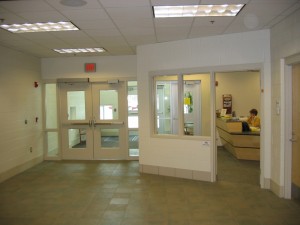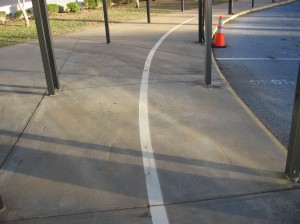
This excellent front office design can dramatically improve access control for a school. While this can be effective in reducing the risks for certain types of school violence, this approach fails to address the majority of mass casualty attack methodologies that have been utilized to carry out most school shootings.
School Shooting at Marysville-Pilchuck Similar to past school shootings
The shooting that has left two students and the perpetrator dead in Marysville, Washington should serve as a stark reminder of the need not to become focused too intently on any one type of school shooting. Many school and public safety officials have been intensively focused on how to stop shootings carried out by external aggressors. While this is one form of school shooting we have seen repeatedly in K12 school incidents for decades, it is far from the most common. Unfortunately, many schools have focused on target hardening of main entryways and office areas in response to the Sandy Hook event at the expense of other important prevention measures such as student threat evaluation, visual weapons screening, and pattern matching and recognition which have each been used to avert numerous school shootings.
Fighting the last war
We have noticed a pronounced tendency for parents, school, and public safety officials to focus intently on the most recent mass casualty school shooting event. This has repeatedly resulted in situations where many schools emphasize prevention and preparedness measures for one specific type of event while not paying as much attention to strategies that could help them prevent and prepare for more likely school shooting scenarios. During hundreds of school security assessment projects we have conducted since the Sandy Hook School Shooting, our analysts have noted a dramatic surge in interest in buzzer access, security laminates for front entryways and other target hardening measures for front entryways and office areas. While these types of security upgrades are often logical and in many cases decades overdue, our analysts have also noted a striking number of school systems and non-public schools that lack any viable student threat evaluation strategy. As the majority of mass casualty school shootings have involved students or former students, behaviorally centered approaches should be a priority for schools.
Too early to accurately determine what took place at Marysville-Pilchuck High School
Having worked seven targeted acts of violence and hundreds of more typical school shootings, edged weapons assaults and other major crisis events at K12 schools, my experience has been that much of what is being reported in the media at this stage will prove to be inaccurate. My experience has been that the most compelling and important lessons to be learned from a school shooting are in the case files reviewed by the expert witnesses during civil actions which typically follow the majority of these tragic events. This makes it imperative that school and public safety officials be pragmatic when considering what is purported to have taken place in any mass casualty school shooting.
